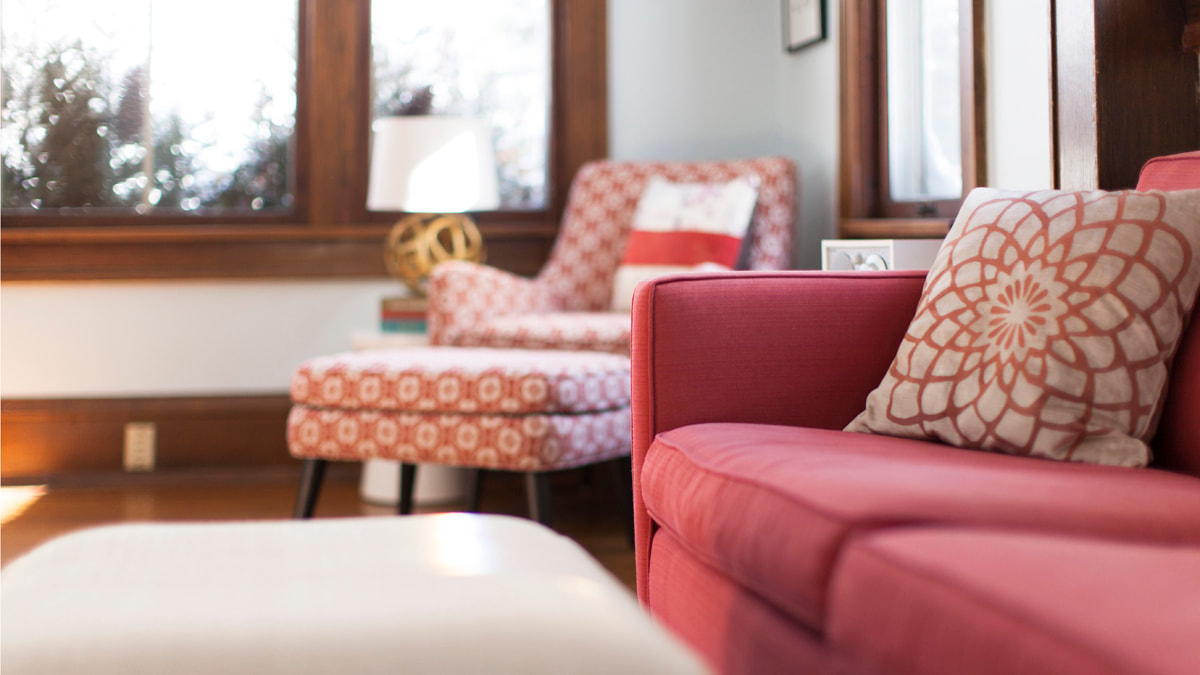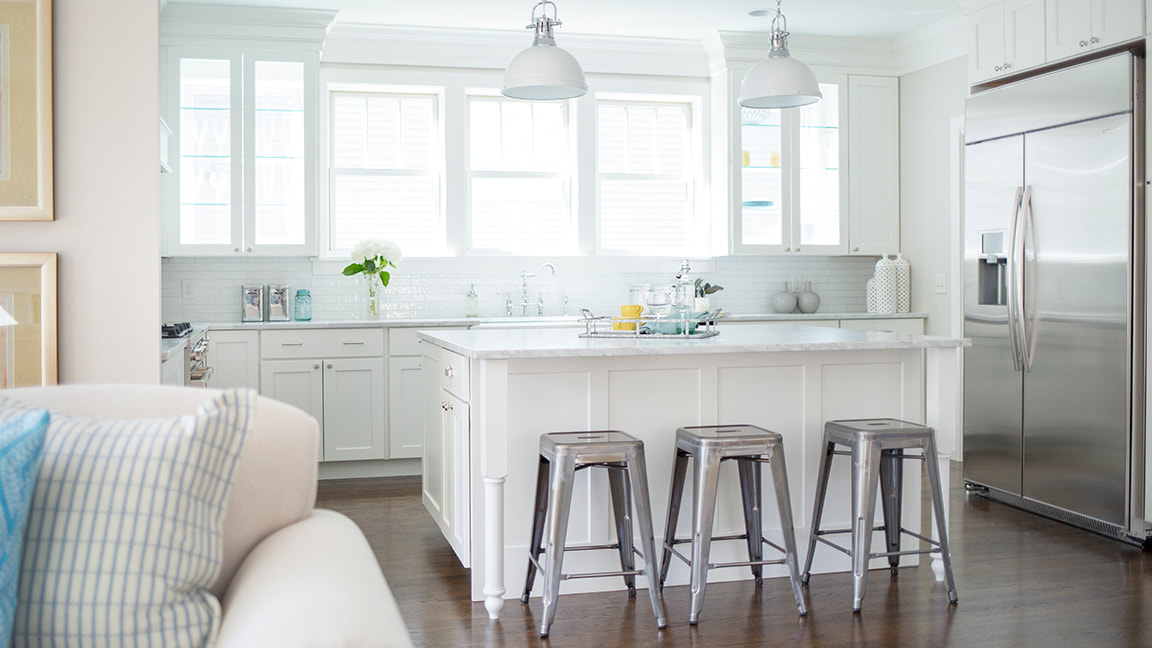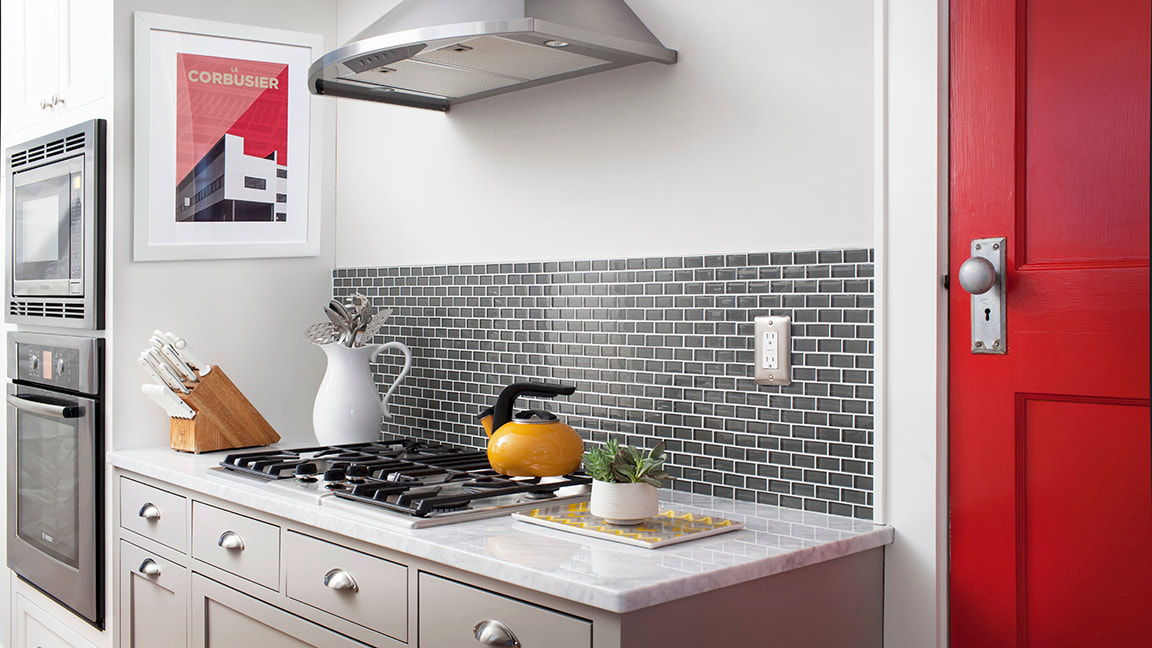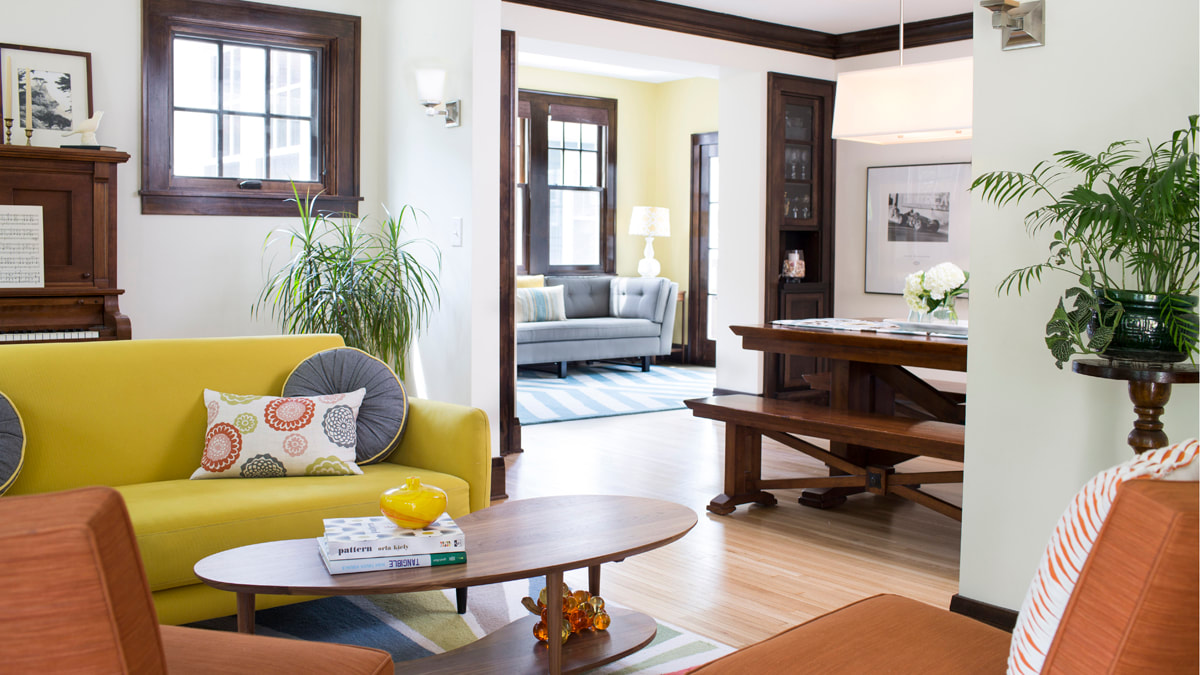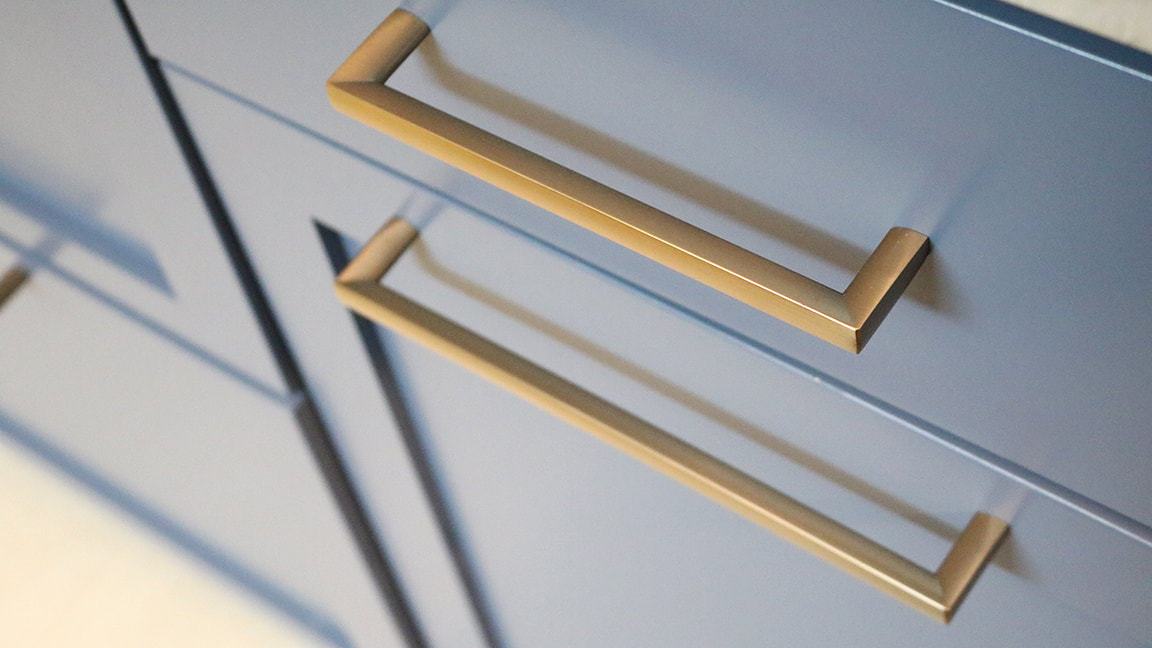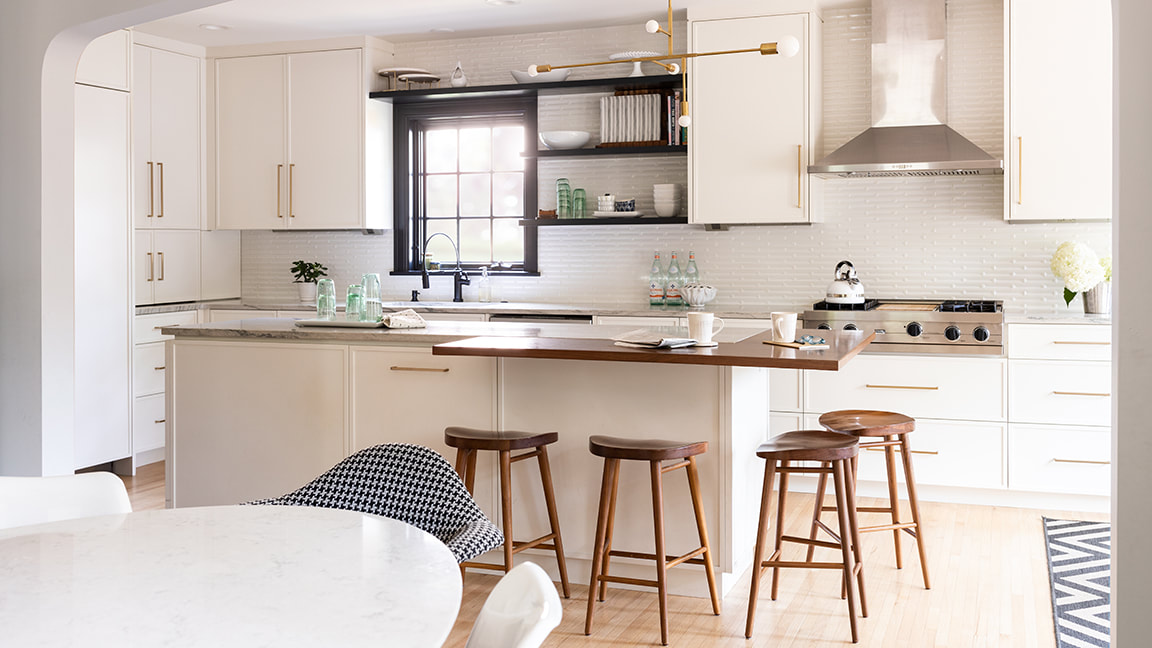R E S I D E N T I A L D E S I G N E R S
|
Quick Links
|
At first glance, most residential designers appear to do good work - their projects look professional on a website, where the results are often a significant improvement over their current home. |
Consideration #1
Design Fee Structure
When meeting with a residential designer, getting an understanding how their design fee is structured is, in our opinion, the most critical consideration as it will have the most immediate impact on your budget.
Design fee is not financed, rather, it is typically a project cost paid out of personal funds.
> Schedule an Initial Meeting with DLD
Four primary methods residential design firms use to structure their fee schedule.
> Percent-Based Fee
> Fixed Fee or Guaranteed Maximum Amount
> Time and Materials
> Hourly
Design fee is not financed, rather, it is typically a project cost paid out of personal funds.
> Schedule an Initial Meeting with DLD
Four primary methods residential design firms use to structure their fee schedule.
> Percent-Based Fee
> Fixed Fee or Guaranteed Maximum Amount
> Time and Materials
> Hourly
BONUS CONSIDERATION Inquire if the residential design firm also offers interior design services. It can be simpler, seamless, and commonly less expensive, to work with the same residential designer on both architectural and interior design. Some residential designers only do architectural work and leave interiors to other firms.
Percent-Based Fee
A percent-based fee is a common way residential design firms structure their design fees.
A fixed fee is exactly that, a set fee percentage attached to the construction budget. A fixed fee for full residential design services commonly runs between 6% and 15%+ of final construction costs. On a project that costs $100,000, for example, the design fee would fall in the range of $6,000 to $15,000.
We know the next question. Why the big range?
The large fee range has to do with a wide variety of factors.
> How new or well-established the firm
> How interested the firm is in your project (or how busy or not busy the firm is)
> How unique or compelling your project is
> How closely your project type fits with their expertise
> How close are you to their office
> Size of the firm
> How efficiently the firm controls costs
> How high the profit margin and overhead costs are
> How much local cachet the firm has
> Design Fees Explained
A young designer who’s building a practice may charge only 5 or 6% because he or she doesn’t have an established name or reputation. In addition to a lower fee, you might also get better service than with a large, big-name firm charging 15%+, as securing a project may be more important to the young designer's career than is the bottom line.
A percent-based fee is a common way residential design firms structure their design fees.
A fixed fee is exactly that, a set fee percentage attached to the construction budget. A fixed fee for full residential design services commonly runs between 6% and 15%+ of final construction costs. On a project that costs $100,000, for example, the design fee would fall in the range of $6,000 to $15,000.
We know the next question. Why the big range?
The large fee range has to do with a wide variety of factors.
> How new or well-established the firm
> How interested the firm is in your project (or how busy or not busy the firm is)
> How unique or compelling your project is
> How closely your project type fits with their expertise
> How close are you to their office
> Size of the firm
> How efficiently the firm controls costs
> How high the profit margin and overhead costs are
> How much local cachet the firm has
> Design Fees Explained
A young designer who’s building a practice may charge only 5 or 6% because he or she doesn’t have an established name or reputation. In addition to a lower fee, you might also get better service than with a large, big-name firm charging 15%+, as securing a project may be more important to the young designer's career than is the bottom line.
BONUS CONSIDERATION If you desire high-end residential design service, than customarily a high-end builder is selected to deliver on the project. Choosing a full-service residential designer most likely commits you to a high-end builder. These decisions go hand-in-hand, so keep this in mind as you consider total project costs.
A 15% fee covers full architectural services. All of the design work and drawings required to get everything you want in your home - custom cabinets, exterior details like brackets, custom siding material layouts, decks, even patios - and have all of it thoughtfully considered and detailed before construction begins.
> Construction Budget vs. Project Budget
With this approach, you pay more upfront but you will have a fully bespoke project with fewer surprise costs during construction. If you want your house to look like your favorite images on Houzz and Pinterest, you probably want this level of service.
A final note on percent-based fee.
The final design fee amount may increase if your project's construction costs rise. Remember, this is a fee percentage based on final construction costs. If your project, for example, was initially estimated at $250,ooo and later grows to $300,000, your design fee (if at 10%) will escalate from $25K to $30K.
> Construction Budget vs. Project Budget
With this approach, you pay more upfront but you will have a fully bespoke project with fewer surprise costs during construction. If you want your house to look like your favorite images on Houzz and Pinterest, you probably want this level of service.
A final note on percent-based fee.
The final design fee amount may increase if your project's construction costs rise. Remember, this is a fee percentage based on final construction costs. If your project, for example, was initially estimated at $250,ooo and later grows to $300,000, your design fee (if at 10%) will escalate from $25K to $30K.
Fixed Fee or Guaranteed Maximum Amount
The second fee structure arrangement is a fixed fee or a Guaranteed Maximum Amount [GMA].
A GMA is exactly that - a promise that design fees will not rise (provided project scope does not change). This is a common design fee structure, and it provides a measure of fee security for the homeowner. In exchange for pricing certainty. However, you forego a chance to save on fee.
> Schedule an Initial Meeting with DLD
It works this way. If the project takes the residential designer longer than anticipated to deliver, you don't pay any additional fee - the design firm makes less per hour. Conversely, if it takes the design firm less time than estimated to complete the work, their profit margin goes up.
Simply put, you get no fee increase or rebate if your project scope remains static.
The second fee structure arrangement is a fixed fee or a Guaranteed Maximum Amount [GMA].
A GMA is exactly that - a promise that design fees will not rise (provided project scope does not change). This is a common design fee structure, and it provides a measure of fee security for the homeowner. In exchange for pricing certainty. However, you forego a chance to save on fee.
> Schedule an Initial Meeting with DLD
It works this way. If the project takes the residential designer longer than anticipated to deliver, you don't pay any additional fee - the design firm makes less per hour. Conversely, if it takes the design firm less time than estimated to complete the work, their profit margin goes up.
Simply put, you get no fee increase or rebate if your project scope remains static.
BONUS CONSIDERATION Another less obvious consideration is the design firms project aesthetic. Do they specialize in contemporary homes? Traditional? Or do they blend old details with new finishes for more of a transitional style. Make sure their design style or approach aligns with yours.
Time & Materials Plus A Not-To-Exceed Clause
If you want to insure that you get what you pay for AND want to keep a hard cap on design fees, another common strategy is to request a Time and Materials bid with a not-to-exceed clause.
Time and materials is more common contract structure with builders, but it applies to designers as well. You are simply stating that you will be billed for each hour worked and that the amount will not surpass a specified amount. If you hit the maximum fee limit, you can raise your limit or stop the project, or step in and finish the work yourself [not typically a realistic option].
Here’s an example of what a not-to-exceed clause might stipulate:
If you want to insure that you get what you pay for AND want to keep a hard cap on design fees, another common strategy is to request a Time and Materials bid with a not-to-exceed clause.
Time and materials is more common contract structure with builders, but it applies to designers as well. You are simply stating that you will be billed for each hour worked and that the amount will not surpass a specified amount. If you hit the maximum fee limit, you can raise your limit or stop the project, or step in and finish the work yourself [not typically a realistic option].
Here’s an example of what a not-to-exceed clause might stipulate:
|
FOR EXAMPLE
|
“Total fees for work shall be based on actual time spent and billed on a time-and-materials basis. Compensation for the scope of work shall not exceed the sum of $4,000, plus expenses and approved adjustments. Statements based on the work completed shall be sent on a bimonthly basis and are due within 15 days.” |
Hourly
And finally, hourly.
With this fee structure, you agree upon an hourly rate of service, and the residential designer charges you for all time spent working on your project.
> Schedule an Initial Meeting with DLD
Designers [most anyone, actually] like this type of arrangement, because they know they can bill for all of their time. The drawback for homeowners is they are on the hook for however many hours it takes to get the job done. In this scenario, more time equals more fee.
As with most industries, hourly rates can vary significantly. Just as you can pay $200 to get your haircut in a salon or $20 to have it done at Great Clips, you can pay vastly different hourly rates for architects based on quality, reputation. and profit margin.
And finally, hourly.
With this fee structure, you agree upon an hourly rate of service, and the residential designer charges you for all time spent working on your project.
> Schedule an Initial Meeting with DLD
Designers [most anyone, actually] like this type of arrangement, because they know they can bill for all of their time. The drawback for homeowners is they are on the hook for however many hours it takes to get the job done. In this scenario, more time equals more fee.
As with most industries, hourly rates can vary significantly. Just as you can pay $200 to get your haircut in a salon or $20 to have it done at Great Clips, you can pay vastly different hourly rates for architects based on quality, reputation. and profit margin.
BONUS CONSIDERATION Make sure to ask what the hourly rate is and if it varies based on the type of work being performed. A firm's design rate may be $200/hr, but their drafting rate may be $65/hr.
If you’re looking for the equivalent of salon-style architectural services, it’s not uncommon to pay $80 per hour for a drafter and $200+ per hour to work with a firm’s principal. The cost for a project architect, associate principal, or designer will fall somewhere between those extremes.
There are a couple ways, however, to control the amount of hours worked, so your checkbook doesn't overheat. You can add a not-to-exceed amount in the contract, or a not-to-exceed percentage of the construction cost.
There are a couple ways, however, to control the amount of hours worked, so your checkbook doesn't overheat. You can add a not-to-exceed amount in the contract, or a not-to-exceed percentage of the construction cost.
Consideration #2
Clarify Structure and Scope of Services
When talking with potential design partners, ask what design services are included — and excluded — in the firm’s fee. Some firms offer only full-service options that include design, construction drawings, specifications, 3D modeling, interior design, and construction observation, while some firms structure their services to be customized to fit your project.
Simply stated, verify how the firm structures their services. Can you customize the level of service and tailor their offerings to your project and budget, or do they have a one-size-fits-all philosophy?
Paying for services you do not need is not a good investment. However, not getting the services you need to ensure your your project turns out the way you want is a waste of time and money.
Full Service
Full-service may be the level of service you want, as it covers every aspect of a project from start to finish. It's a perfect arrangement for homeowners who are inexperienced, less interested in the process, or too busy to give their project the time and attention it demands.
If this describes your situation, you may want a full-service solution to guide you through the design and construction process. Designing and constructing a residential project - even a small one - is a complex and nuanced process.
Most people don't have the experience or interest in going it alone.
Keep in mind, however, that full-service also means full cost.
Given that design fees are paid up front, before any construction financing is arranged, they are typically paid out-of-pocket. Make sure your project budget has the flexibility and capacity to pay top-dollar for design services with cash-on-hand.
Customizable Services
But full-service may be more than you need.
Maybe your project is modest in size or you are an experienced remodeler and simply need a completed construction document set from which to build, estimate, and permit. Maybe you plan to handle the selection of fixtures and materials yourself, and act as the general contractor.
Or perhaps you want something between bare bones and full-service, a mix of mid-level services that are structured to meet your unique project needs.
If so, a more customized, reduced suite of design services may be more of what you need. Perhaps you have a builder selected, for example, but you want help with interiors. Or maybe you need help selecting a builder, or want to see your addition as a 3D model, but don't need guidance during construction.
Such a level of customization is not universally available, so talk with a prospective residential design firm about the level of service you need and if they will adjust their level of service to accommodate. Ask how a firm structures its design services.
If it's not able to help you determine what level of service is right for you and how they match those needs, they may not be the right firm for you and your project.
Simply stated, verify how the firm structures their services. Can you customize the level of service and tailor their offerings to your project and budget, or do they have a one-size-fits-all philosophy?
Paying for services you do not need is not a good investment. However, not getting the services you need to ensure your your project turns out the way you want is a waste of time and money.
Full Service
Full-service may be the level of service you want, as it covers every aspect of a project from start to finish. It's a perfect arrangement for homeowners who are inexperienced, less interested in the process, or too busy to give their project the time and attention it demands.
If this describes your situation, you may want a full-service solution to guide you through the design and construction process. Designing and constructing a residential project - even a small one - is a complex and nuanced process.
Most people don't have the experience or interest in going it alone.
Keep in mind, however, that full-service also means full cost.
Given that design fees are paid up front, before any construction financing is arranged, they are typically paid out-of-pocket. Make sure your project budget has the flexibility and capacity to pay top-dollar for design services with cash-on-hand.
Customizable Services
But full-service may be more than you need.
Maybe your project is modest in size or you are an experienced remodeler and simply need a completed construction document set from which to build, estimate, and permit. Maybe you plan to handle the selection of fixtures and materials yourself, and act as the general contractor.
Or perhaps you want something between bare bones and full-service, a mix of mid-level services that are structured to meet your unique project needs.
If so, a more customized, reduced suite of design services may be more of what you need. Perhaps you have a builder selected, for example, but you want help with interiors. Or maybe you need help selecting a builder, or want to see your addition as a 3D model, but don't need guidance during construction.
Such a level of customization is not universally available, so talk with a prospective residential design firm about the level of service you need and if they will adjust their level of service to accommodate. Ask how a firm structures its design services.
If it's not able to help you determine what level of service is right for you and how they match those needs, they may not be the right firm for you and your project.
BONUS CONSIDERATION If you want help with cabinet design, color selection, or hardware selection you must work with a residential designer who offers interior design services, or you will have to hire an interior designer to fulfill the role. Either approach works, simply know in advance which option is best for you.
Consideration #3
Personality & Fit
The designer/client relationship is very personal, involving discussions of your habits, your hobbies, your hopes, tastes, and even personal or private family dynamics (do you shower together, for example, and need two shower heads in your new master bathroom).
There are no hard and fast rules about how to make sure the "fit" is right. But you want the choice to be right. Getting this consideration wrong will never be offset by any amount of savings in design fee.
Most people identify a feeling or a sense that suggests a good match. The suggestions that follow, however, will help you analyze the personality, design strategy and communication skills of your candidates. Ultimately, you want to find the architect who’s right for your situation, for your budget and for you.
> Check Online Reviews
Like many service professionals, architects get much of their business through referrals and word of mouth. Ask family, friends and professional colleagues for referrals. Go online and research a firm's reputation. If they don't have many reviews in Google or Houzz, this may be a red flag, or they may simply not work at getting reviews.
> See what past clients have said about working with DLD
But if they are a legitimate business, they understand the importance of reputation management and the role reviews play.
There are no hard and fast rules about how to make sure the "fit" is right. But you want the choice to be right. Getting this consideration wrong will never be offset by any amount of savings in design fee.
Most people identify a feeling or a sense that suggests a good match. The suggestions that follow, however, will help you analyze the personality, design strategy and communication skills of your candidates. Ultimately, you want to find the architect who’s right for your situation, for your budget and for you.
> Check Online Reviews
Like many service professionals, architects get much of their business through referrals and word of mouth. Ask family, friends and professional colleagues for referrals. Go online and research a firm's reputation. If they don't have many reviews in Google or Houzz, this may be a red flag, or they may simply not work at getting reviews.
> See what past clients have said about working with DLD
But if they are a legitimate business, they understand the importance of reputation management and the role reviews play.
BONUS CONSIDERATION Online review are a wonderful way to get a sense or flavor of what it's like to work with a particular residential designer. According to the home improvement website HOUZZ, over 80% of clients state that reviews are the most important consideration when selecting a designer.
> Schedule an Initial Meeting
Make an appointment to meet at the designer’s office or better yet, at your house. There should be no charge for an initial consultation to discuss your project. No design ideas will be developed, but it is a great way to get a sense of what it might be like to work with the designer.
Wondering what to ask at the initial meeting?
> Schedule an Initial Meeting with DLD
Let the designer know what's most important to you about your project. Solicit thoughts about incorporating that into the process. If you are remodeling, start with the aspects of your house you currently like or would like to take better advantage of.
Here are some questions to get the ball rolling.
> Can I see some examples of your work?
> How would you approach this project?
> What are some of the largest obstacles on a project like this?
> How do you charge, and what are your fees?
> How long will the design process take?
> Can you give me referrals for contractors you like?
> Are there any red flags with what I want to do?
> And finally...Your Budget
Don’t shy away from the money conversation.
Be direct and honest about your budget, whether it's a maximum amount or a range. Whether your project is $50,000 or $500,000, it’s important to be up front from the get-go, as you need to confirm that your project is viable.
Construction costs can vary considerably from year to year and city to city. Just because your neighbor, who did a project several years ago, says it can be done for "X" dollars doesn’t necessarily mean it's so.
Make an appointment to meet at the designer’s office or better yet, at your house. There should be no charge for an initial consultation to discuss your project. No design ideas will be developed, but it is a great way to get a sense of what it might be like to work with the designer.
Wondering what to ask at the initial meeting?
> Schedule an Initial Meeting with DLD
Let the designer know what's most important to you about your project. Solicit thoughts about incorporating that into the process. If you are remodeling, start with the aspects of your house you currently like or would like to take better advantage of.
Here are some questions to get the ball rolling.
> Can I see some examples of your work?
> How would you approach this project?
> What are some of the largest obstacles on a project like this?
> How do you charge, and what are your fees?
> How long will the design process take?
> Can you give me referrals for contractors you like?
> Are there any red flags with what I want to do?
> And finally...Your Budget
Don’t shy away from the money conversation.
Be direct and honest about your budget, whether it's a maximum amount or a range. Whether your project is $50,000 or $500,000, it’s important to be up front from the get-go, as you need to confirm that your project is viable.
Construction costs can vary considerably from year to year and city to city. Just because your neighbor, who did a project several years ago, says it can be done for "X" dollars doesn’t necessarily mean it's so.





